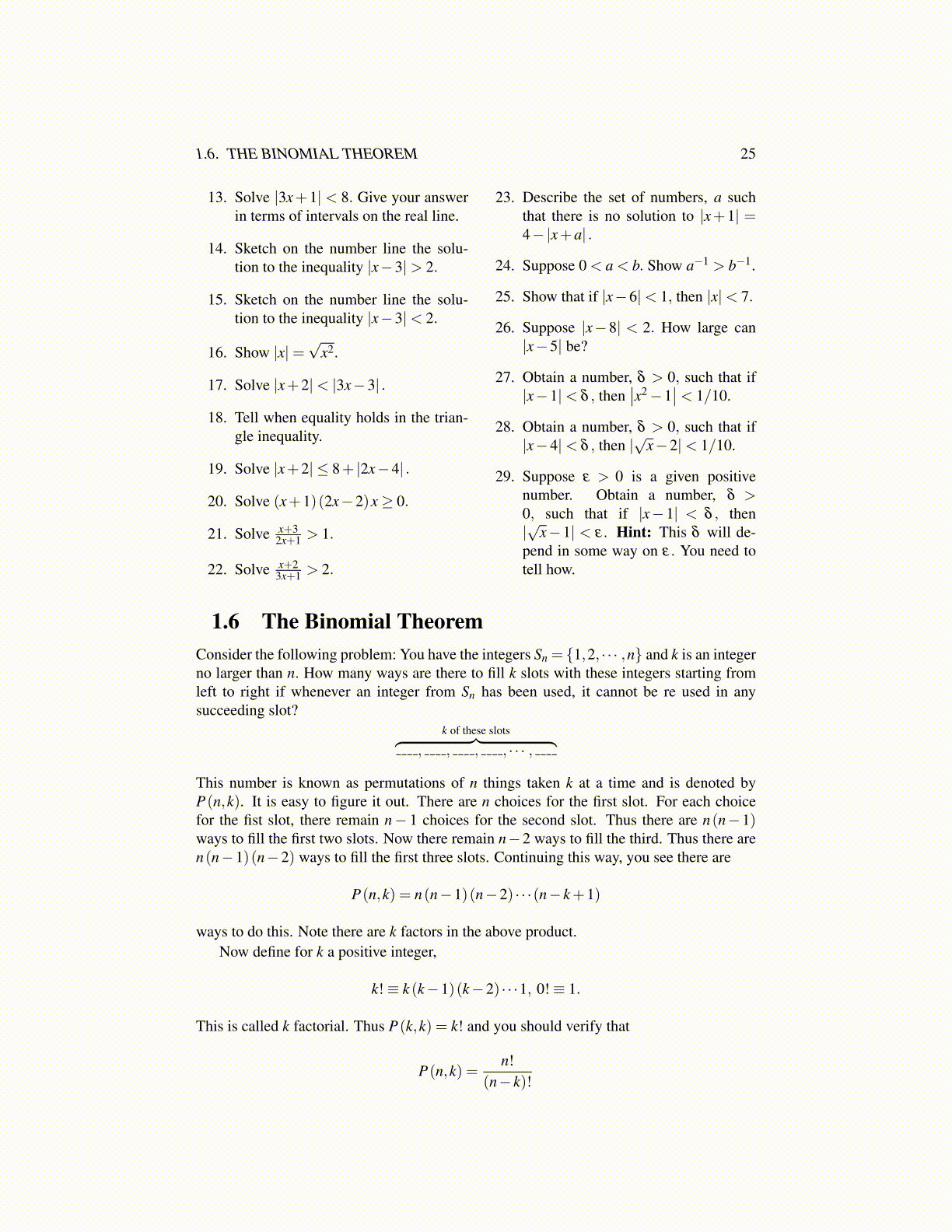
1.6. THE BINOMIAL THEOREM 25
13. Solve |3x+1| < 8. Give your answerin terms of intervals on the real line.
14. Sketch on the number line the solu-tion to the inequality |x−3|> 2.
15. Sketch on the number line the solu-tion to the inequality |x−3|< 2.
16. Show |x|=√
x2.
17. Solve |x+2|< |3x−3| .
18. Tell when equality holds in the trian-gle inequality.
19. Solve |x+2| ≤ 8+ |2x−4| .
20. Solve (x+1)(2x−2)x ≥ 0.
21. Solve x+32x+1 > 1.
22. Solve x+23x+1 > 2.
23. Describe the set of numbers, a suchthat there is no solution to |x+1| =4−|x+a| .
24. Suppose 0 < a < b. Show a−1 > b−1.
25. Show that if |x−6|< 1, then |x|< 7.
26. Suppose |x−8| < 2. How large can|x−5| be?
27. Obtain a number, δ > 0, such that if|x−1|< δ , then
∣∣x2 −1∣∣< 1/10.
28. Obtain a number, δ > 0, such that if|x−4|< δ , then |
√x−2|< 1/10.
29. Suppose ε > 0 is a given positivenumber. Obtain a number, δ >0, such that if |x−1| < δ , then|√
x−1| < ε . Hint: This δ will de-pend in some way on ε. You need totell how.
1.6 The Binomial TheoremConsider the following problem: You have the integers Sn = {1,2, · · · ,n} and k is an integerno larger than n. How many ways are there to fill k slots with these integers starting fromleft to right if whenever an integer from Sn has been used, it cannot be re used in anysucceeding slot?
k of these slots︷ ︸︸ ︷, , , , · · · ,
This number is known as permutations of n things taken k at a time and is denoted byP(n,k). It is easy to figure it out. There are n choices for the first slot. For each choicefor the fist slot, there remain n− 1 choices for the second slot. Thus there are n(n−1)ways to fill the first two slots. Now there remain n−2 ways to fill the third. Thus there aren(n−1)(n−2) ways to fill the first three slots. Continuing this way, you see there are
P(n,k) = n(n−1)(n−2) · · ·(n− k+1)
ways to do this. Note there are k factors in the above product.Now define for k a positive integer,
k! ≡ k (k−1)(k−2) · · ·1, 0! ≡ 1.
This is called k factorial. Thus P(k,k) = k! and you should verify that
P(n,k) =n!
(n− k)!